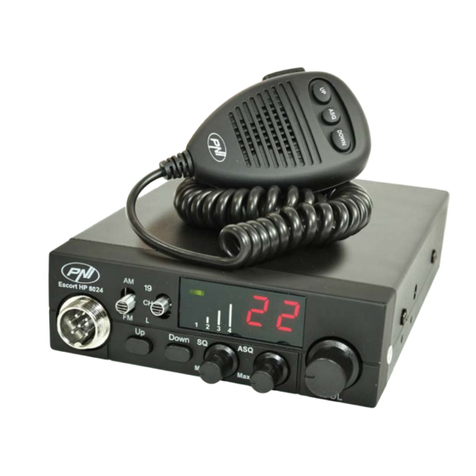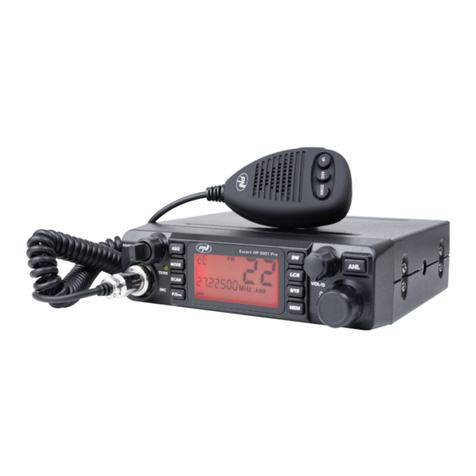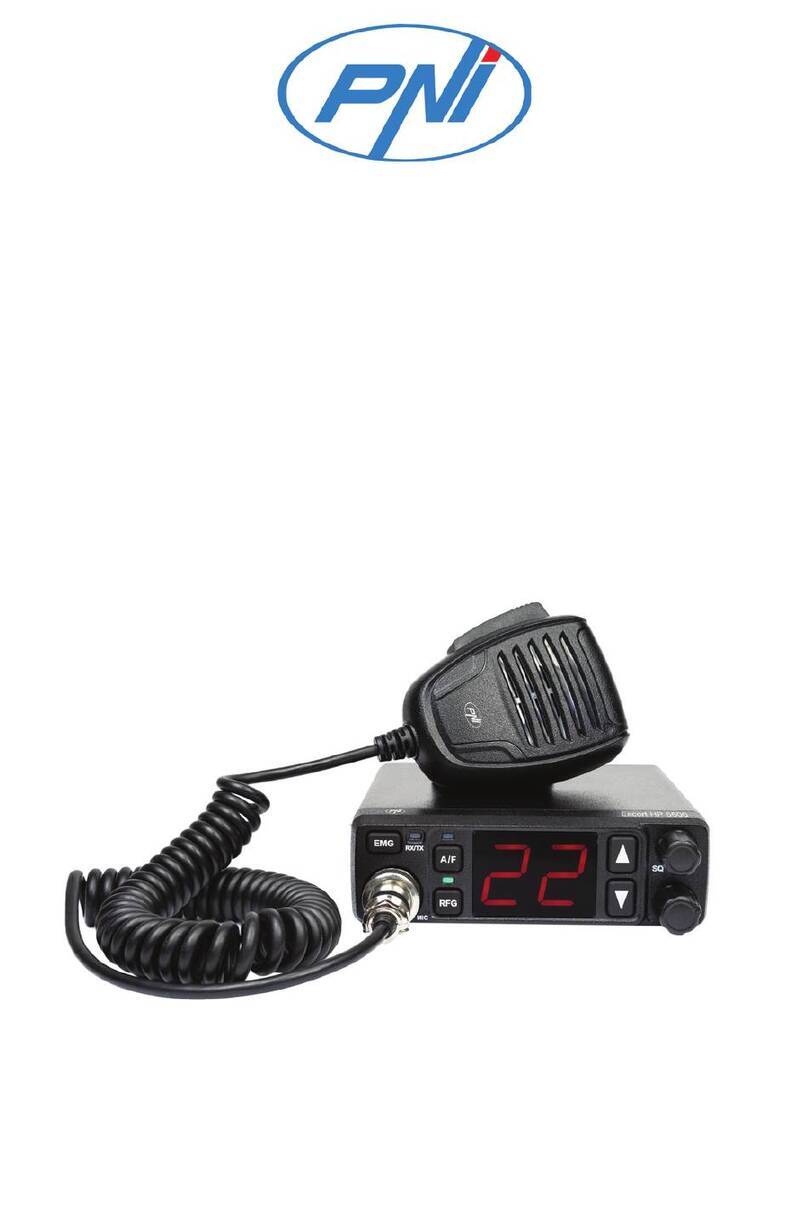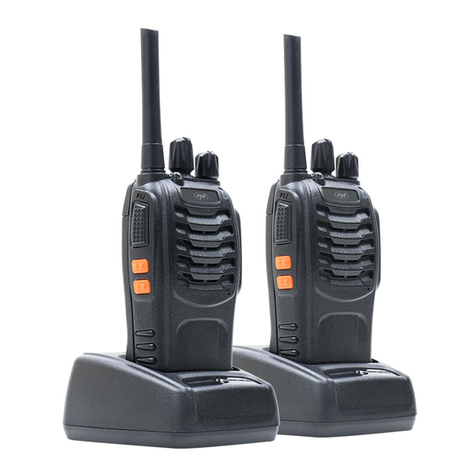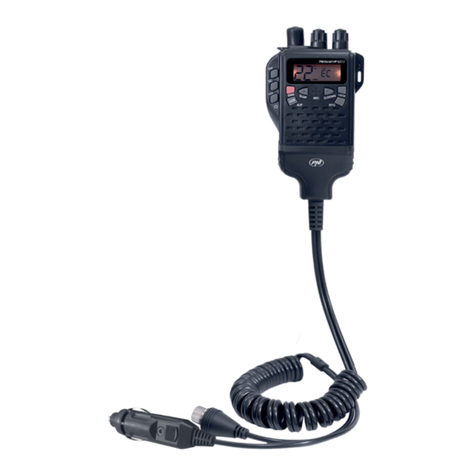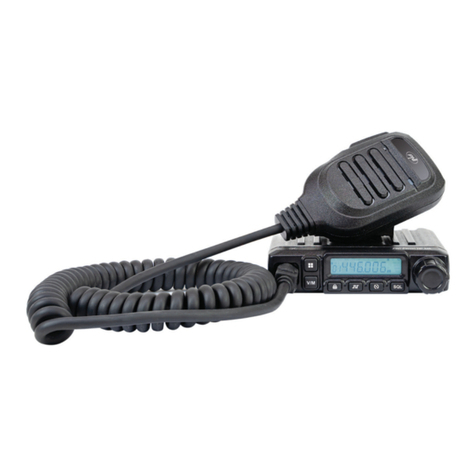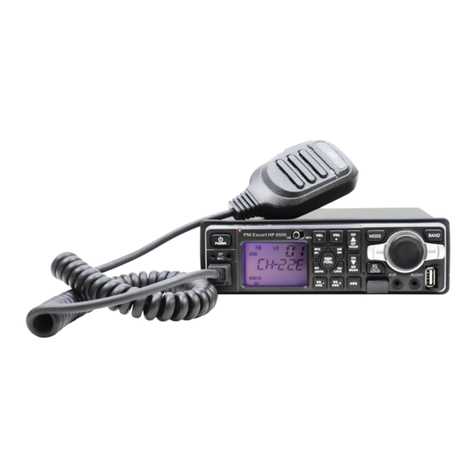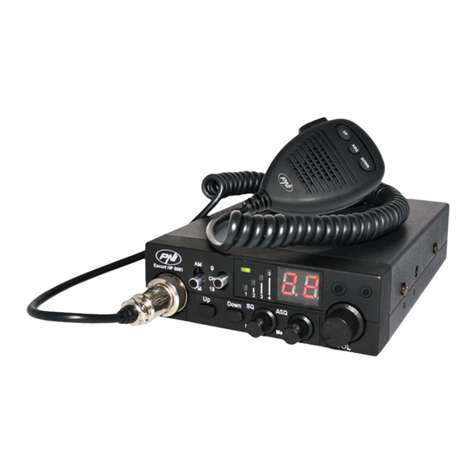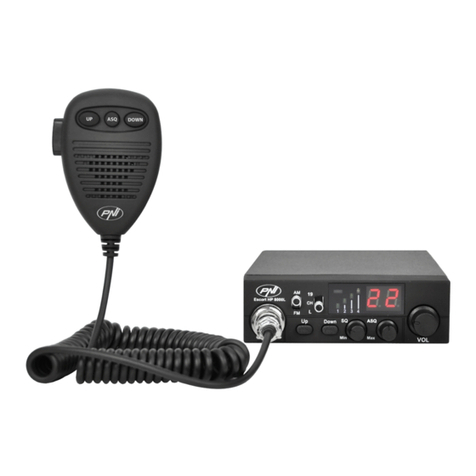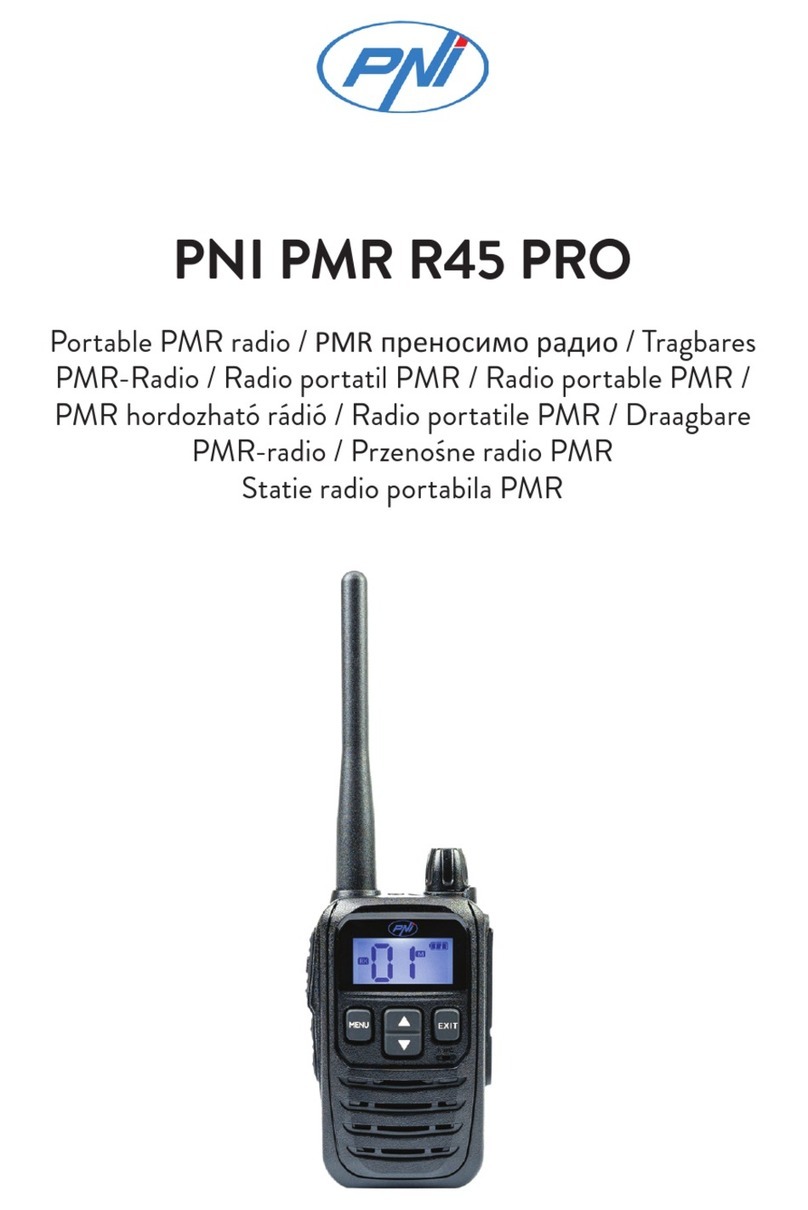
12
Hindernissen abgeschirmt zu sein und so weit wie möglich von irgendeiner elektrischen Quelle oder
elektromagnetischen Störungen entfernt zu sein. Das Koaxialkabel der Antenne sollte nicht unterbrochen
von oder gedrückt werden. Verbinden Sie den Stecker am Ende des Antennenkoaxialkabels mit der
Antennenbuchse auf der Rückseite der Station.
Überprüfen des Betriebs der Station:
Nach der Installation und der Stromversorgung durch das elektrische System des Fahrzeugs gehen Sie
folgendermaßen vor, um den Betrieb zu überprüfen:
•Überprüfen Sie, ob das Kraftwerk korrekt eingeschaltet ist
•Überprüfen Sie die Antennenverbindung zur Station
•Schließen Sie das Mikrofon an die Buchse an der Vorderseite der Station an
•Schalten Sie den Sender ein, indem Sie das Lautstärkepotentiometer im Uhrzeigersinn drehen und die
Lautstärke auf das gewünschte Niveau einstellen
•Wählen Sie den gewünschten Kanal mit den Tasten UP / DOWN an der Vorderseite oder am Mikrofon.
•Drücken Sie die SQ-Taste im Grenzbereich, in dem das Hintergrundgeräusch verschwindet.
Hinweis: Wenn der ASQ-Modus aktiviert ist (durch Drücken des ASQ am Mikrofon), kann die SQ-Taste nicht
aktiviert werden
•Drücken Sie zum Senden die PTT-Taste am Mikrofon und lassen Sie sie zum Empfang los.
•Überprüfen Sie den Signalpegel, der über die Signalbalken auf dem Frontpanel empfangen wird.
•Drehen Sie die ASQ-Funktion am Mikrofon und stellen Sie den Pegel über die ASQ-Taste an der
Vorderseite der Station ein.
NÜTZLICHE LINKS:
Vertauschen Sie nicht die Polarität des Kraftwerks.
Ersetzen Sie die Sicherung nicht durch einen höheren Wert. Die Fabrik hat 2A.
Senden Sie nicht ohne Antenne oder eine defekte oder unkalibrierte Antenne, um ein Verbrennen des
Emissionsendes zu vermeiden. Passen Sie SQ und ASQ an die Grenze des Verschwindens von
Hintergrundgeräuschen an. Wenn Sie den SQ-Knopf zu stark im Uhrzeigersinn drehen, erhalten Sie nur
starke Signale (die in der Nähe emittiert werden).
Standardänderung:
Gehen Sie folgendermaßen vor, um die Norm zu ändern, in der Sie das CB-Radio verwenden:
•Halten Sie die Tasten "Down" und "PTT" am Mikrofon gedrückt und schalten Sie den Sender ein
•Verwenden Sie die Aufwärts- und Abwärtstasten an der Station, um die gewünschte Einstellung auszuwählen
•Stoppen und starten Sie die Station neu
Um die aktuelle Norm zu überprüfen, verwenden Sie dasselbe Verfahren.
Verfügbare Regeln:
• CE: 26.965 - 27.405 MHz doar FM (Rumänien)
• 9: 26.965 - 26.955 80 canale AM FM (Deutschland)
•
A: 25.615 - 26.055MHz (Russland)
•b: 26.065 - 26.505MHz (Russland)
•C: 26.515 - 26.955MHz (Russland)
•d: 26.965 - 27.405MHz (Italien)
•E: 27.415 - 27.855MHz (Spanien)
•F: 27.865 - 28.305MHz (Frankreich)
•p: 26.960 - 27.400MHz (Polen)
•n: 26.330 - 26.770MHz AM FM (Niederlande)


